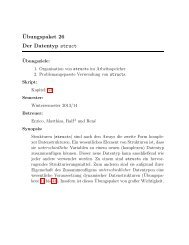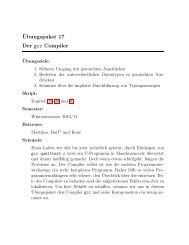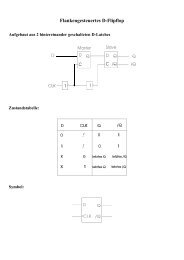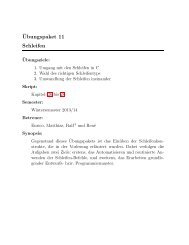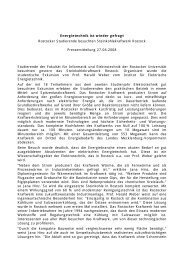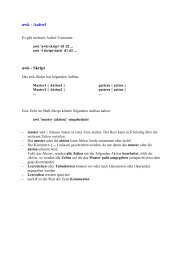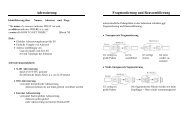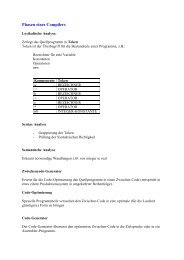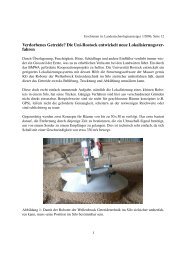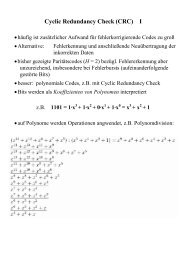An Automatic ESL Synthesis Approach by Design Space
An Automatic ESL Synthesis Approach by Design Space
An Automatic ESL Synthesis Approach by Design Space
Create successful ePaper yourself
Turn your PDF publications into a flip-book with our unique Google optimized e-Paper software.
SYSTEMCODESIGNER • 1:3<br />
model. Integration of Forte’s Cynthesizer allows translating SystemC modules<br />
from this model into RTL code. The resulting actor implementations are characterized<br />
regarding their size (number of look-up tables, number of block RAMs,<br />
etc.) and their performance (latency). On the other hand, actors are compiled for<br />
embedded processor cores, making it possible to estimate execution times. The<br />
obtained values are used during the multiobjective design space exploration,<br />
where a highly accurate performance model is automatically generated from<br />
the SystemC behavioral model. The result of the design space exploration is a<br />
set of so-called nondominated solutions. From this set, the designer can select<br />
those solutions which are best suited for application and synthesize them, for<br />
example, using Xilinx EDK [XILINX 2005].<br />
This article describes the corresponding design flow. A special emphasis is<br />
put on the integration of behavioral synthesis that permits the automatic generation<br />
of hardware accelerators from a given behavioral model. This capability<br />
extends results presented in a previous publication [Haubelt et al. 2007], where<br />
hardware accelerators still have to be implemented manually, thus requiring a<br />
lot of expertise and user interaction <strong>by</strong> the designer. Moreover, a Motion-JPEG<br />
decoder serves as running example throughout this article in order to illustrate<br />
the modeling complexity supported <strong>by</strong> SYSTEMCODESIGNER. In particular,<br />
the Motion-JPEG decoder contains complex modules whose manual hardware<br />
implementation would be time-consuming and error-prone. Here, the seamless<br />
integration of Forte’s Cynthesizer high-level compiler into our design flow<br />
brings an impressive productivity gain. Finally, this article presents a comprehensive<br />
accuracy analysis of the proposed performance simulation, which is<br />
particularly important to understand when used in automated decision making<br />
(design space exploration). For this purpose, a new method for determining<br />
software execution times is proposed. As a result, it will be shown that new approaches<br />
in automatic software synthesis presented in this article reduce the<br />
schedule overhead <strong>by</strong> up to 25%.<br />
The rest of the article is structured as follows: After presenting related work<br />
in Section 2, Section 3 introduces the Motion-JPEG example used throughout<br />
the article. Our design system, called SYSTEMCODESIGNER, is presented in<br />
Section 4. In order to integrate design space exploration and behavioral synthesis,<br />
a synthesizable subset of SystemC has to be specified. This is done in<br />
Section 5, which discusses SYSTEMOC, a SystemC library that strictly separates<br />
the data transformation from the communication behavior of a single<br />
actor. The automatic actor synthesis is discussed in Section 6. Section 7 is devoted<br />
to design space exploration, while Section 8 discusses the bit stream<br />
generation for FPGA-based hardware/software SoC implementations. Finally,<br />
Section 9 presents the results obtained <strong>by</strong> applying our proposed methodology<br />
to the Motion-JPEG decoder example using our SYSTEMCODESIGNER and<br />
Cynthesizer from Forte. As a key result, the decoder was implemented with immediate<br />
success in various configurations, while the overall development process<br />
took only about one month. The obtained implementations show different<br />
tradeoffs between hardware costs and achieved system performance, ranging<br />
from software-only solutions to real-time systems for QCIF streams targeting<br />
a 50MHz Virtex-II FPGA.<br />
ACM Transactions on <strong>Design</strong> Automation of Electronic Systems, Vol. 14, No. 1, Article 1, Pub. date: January 2009.




